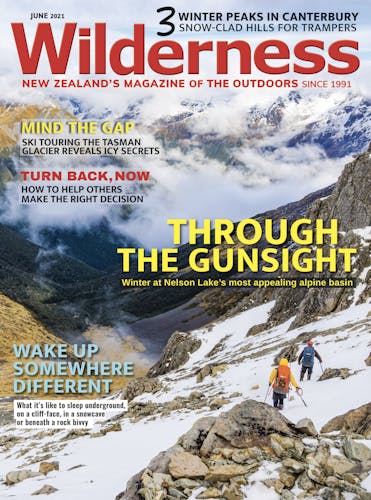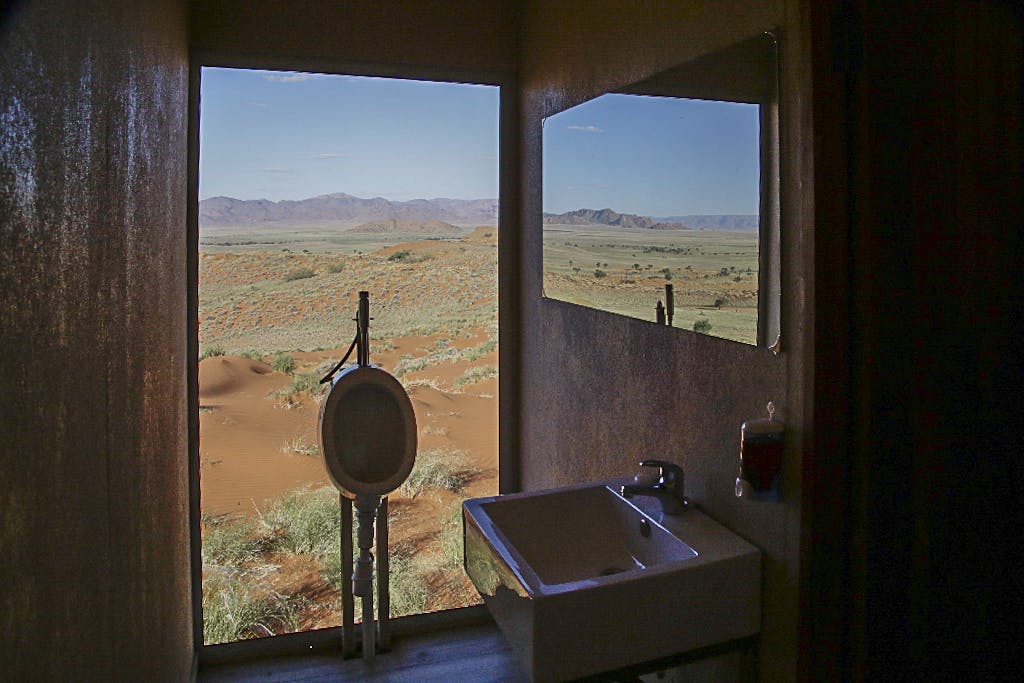Letter of the month
Tips for plus-sized trampers
It’s great to see more plus-sized gear is becoming available (‘Go big or go home’, May 2021).
I’m a big person (160kg) and am completing an overnight tramp every month this year as a way to lose weight.
Lots of gear I have bought is heavy and bulky – my only winter piece of clothing is a big wind-stopper fleece that weighs 1500g. I know I won’t find anything filled with down that fits me. My raincoat only just makes it round my puku and it always seems to take up way too much space and weight in my pack.
I have some tips for my fellow plus-sized hikers:
- Pack light where you can so you have more room for your raincoat and warm gear.
- Hunting stores stock lots of plus-sized gear.
- Polypro is your friend.
- Find a canvas shop and get your pack straps extended so the pack sits better on your waist.
- Use a bum bag if you can’t reach your pack’s hipbelt pockets.
– Thomas Mandeno
– Thanks for sharing your trips Thomas, and best of luck with your overnight tramps. A Ledlenser MH5 headlamp worth $120 from www.ledlenser.co.nz is on its way. Readers, send your letter to the editor for a chance to win.
Routeburn in a day
Further to the web-exclusive story ‘The Routeburn in one day’, this may be of interest. On November 22, 1986, Russell Prince and Ross Redpath started from The Divide on the Milford Road and ran the track in just over 7hr – return!
Russell and Ross were together at Glenorchy in a time of 3hr14min. Russell finished at The Divide in 7hr08min and Ross in 7hr20min.
Not a bad effort, eh?
– Ray Willett
Dogs have no place in native bush
I enjoy reading Wilderness and the encouragement it gives to everyone to enjoy New Zealand’s outdoors. However, the article ‘A tramper’s best friend’, encouraging people to take pet dogs on tramping trips, was disappointing.
New Zealand has amazing scenery and forests, mountains and lakes that are the best in the world. I worked for DOC for 15 years and have been a member of Forest & Bird for about 50 years and am currently chair of the Te Puke branch.
Our branch funded the establishment of the Otanewainuku Kiwi Trust in 2003 and I have a role with the trust providing educational talks about kiwi.
One thing most people are not aware of is the fact that kiwi have very fragile chests and they are easily injured. Just a nudge from an inquisitive dog can break their ribs, their lungs are pierced and the kiwi dies.
Kiwi will go to sleep in a burrow close to a walking track and they have a distinctive smell that is tempting to dogs – a poodle on a lead killed a kiwi in Northland.
Volunteer groups spend thousands of hours and thousands of dollars on kiwi protection, increasing the chance to restore kiwi populations in our forests where they belong. I feel it is important to make sure we do everything possible to support these projects – encouraging dogs into native forests is not helpful.
– Carole Long QSM
– I would hope that all responsible dog owners taking their animals into kiwi habitat first undergo DOC’s avian aversion training. -AH
Where are the local products?
In reading ‘2021’s guide to wet weather jackets’, I was disappointed to see that out of the 18 jackets shown, all bar one were manufactured in an emerging economy country.
I make a conscious effort to buy New Zealand made. As I type this, I’m wearing Glowing Sky merino made in Timaru, Cactus Outdoor shorts (five years old and still going strong) made in Christchurch. And hanging off the back of the dining room chair, to the chagrin of my wife who tells me that I leave my clothes littered around the house, is a quality Dunedin-made Earth Sea Sky raincoat.
Buying New Zealand-made pays local wages, you can get it repaired, it helps the balance of trade deficit and you get the feel-good factor of having a smaller carbon footprint.
– Darren Mora
– Manufacturers and distributors are invited, and pay, to display their products in Wilderness gear guides (though not our gear reviews). It is their decision to be included, not that of Wilderness. -AH
Sustainable insulated jackets the way to go
I was truly impressed by the content and even the advertisements in the May 2021 issue.
I am not a dedicated tramper, however, I have committed most of my adult life to adventure and leading expeditions in Africa.
Regarding the excellent guide to insulated jackets, I have always bought the best and most expensive jackets I could afford. Although cost does not always equal quality, it usually does. Fourteen years ago I purchased a $295 expedition outer shell made from Ventex (a Gore-Tex equivalent). I did question my sanity as $295 could buy a lot of gear back then, but it is still going strong after being worn on adventures and expeditions to 15 countries.
I wholeheartedly support the core values of a company like Patagonia so as to limit ecological impact, recycle where possible and support grassroots organisations by paying realistic prices for raw materials so that the suppliers don’t have to cut down forests in order to feed their families. I think the RDS (Responsible Down Standard) is a great move in the right direction.
A final note, in reply to your correspondent River Howe who complained about ‘Great loo views hard to find’, I was filming a documentary in Namibia and was told these toilets (featured image) were the most talked about room in the lodge.
– Greg van der Reis
Swazi does larger sizes
It was great to see the article dedicated to plus-size trampers (‘Go big or go home’, May 2021).
As an adult, I have always struggled to find well-fitting technical garments. I still have a jacket from a New Zealand-based outdoor clothing company circa 2000 in a size XL which fits me nicely, however, nowadays I can’t even fit any of their 2XL or 3XL gear which seems very odd.
I have found that Levin-based Swazi also do some great technical gear for plus size people. Best of all, their high-end gear is still made in New Zealand, so it supports local manufacturing. I really love my Swazi outer layer jacket and would recommend it to others.
– Brent Knudsen








